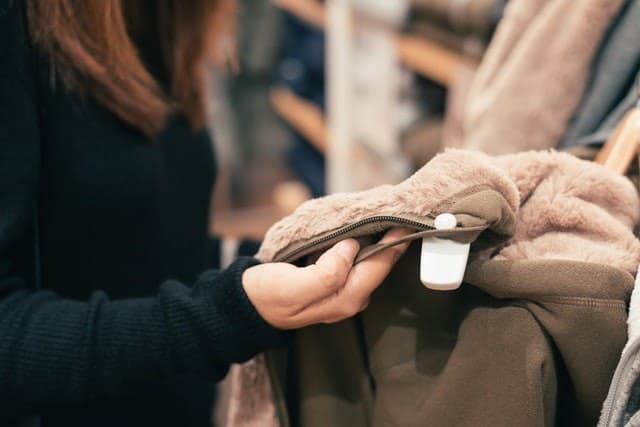Introduction
The world of fashion sustainability can be better understood by looking at the new models of behavior that are affecting customers. In this post, we are going to look at some interesting trends that have altered the traditional customer-brand relationship.
As a result, companies are required to step up their game and embrace new, more accountable approaches to corporate social responsibility, in order to involve in their business strategy a much wider range of stakeholders. In this post, we are going to address the following topics:
- New models of behavior for sustainable customers
- New CSR strategies in fashion sustainability
- New standards of certification in sustainability and supply chain transparency
- Conclusions
1. New models of behavior for sustainable customers
In order to appreciate the evolution of the fashion consumer, we must take into account two new models of behavior in the fashion industry:
- The Co-Creator Customer. This model of a customer perceives value, not in a one direction relationship with a brand. The co-creator wants to test the brand and its social currency, by creating content that celebrates a product and adds a social dimension to it. In this sense, a product is not an end, but a means to start a relationship with a brand, which encompasses, but is not limited by the purchase.
- The Producer-Designer-Client. This model is very popular for those individuals who have experience with crowdfunding and crowdsourcing platforms. In crowdfunding and crowdsourcing campaigns producers enter a close relationship with their customer audience in order to collect as much information as possible about their respective markets and make their product better, or more desirable.
These trends show that all in all the customer that fashion brands are speaking too is more aware and better informed of the “behind-the-scenes” of fashion garment production, in terms of natural resources, human resources and profitability goals of a company. At the same time, this does not mean that the modern customer is easier to serve. On the contrary, many fashion brands are struggling to keep up with the pace of the market, and the requests of more demanding customers. These are some additional features of the current fashion client:
- Polygamy. Customers are not loyal to one brand anymore but entertain different “love affairs” with different brands.
- Nomadism. This is both in a physical and psychological sense. From a physical sense customers are traveling much more than they used to, but at the same time, psychologically speaking customers are also evolving in taste at a much faster pace.
- Competent, Demanding, Selective. As we already discussed, the information available to consumers makes them more able to go beyond the front-of-the-house of a firm, and really collect information about their sustainable practices.
- Price Sensitive. Customers are overwhelmed by cheaper and cheaper shopping experiences, and as such, due to fast (cheap) fashion customers are much more demanding in terms of what type of deal they are getting. Also, however, it has been noted that customers are happy to spend 10-12% more in the purchase of items that are more sustainably produced.
- Collaborative Consumption. All in all, with share economies customers are getting more and more used to the idea of accessing experiences as opposed to purchasing ownership.
In the context of fashion and lifestyle, these trends have created a specific new customer segment which is called LOHAS, or customers who pursue a lifestyle of health and sustainability. This shows how, all in all, the trend shows who the values that should be at the heart of a new generation of companies should revolve around shared values as opposed to personal values.
2. New CSR strategies in fashion sustainability
After having conducted this first, external analysis of the sustainable fashion market, we can move towards a more internal look. Fashion firms in this sense, need to develop management strategies that allow them to address the market challenges. The simples adagio we can identify is the one provided by the “three Ps” People, Planet, Profit. In this sense, academic literature helps business practitioners in identifying three lines of accountability:
- Human Resource Sustainability
- Natural Resource Sustainability
- Sustainable Profit
This approach is also what created the philosophy of the triple bottom line, as opposed to simply looking at the profits. Moreover, new groups of stakeholders need to be identified in order to take into account all of the individuals who are affected by a company’s actions. We can identify two main categories:
- Primary Stakeholders. Primary stakeholders are those who are necessary to the functioning of a company.
- Secondary Stakeholders. These stakeholders usually entail the media, public opinion, political institutions, etc.
As a result of these movements of thought Corporate Social Responsibility or CSR, in short, has been devised to help managers address the concerns with a utilitarian approach to business (the end justifies the means). This has become particularly relevant in the context of issues which are becoming every day more apparent:
- The scarcity of the planet’s natural resources.
- The new concept of consumer (as discussed above)
- The delocalization of the supply chain.ù
- The issues in human labor and human resource management
- More accessible information
The shifts happening in the business world have been echoed in the world of finance, with the creation of the Dow Jones Sustainability Index, which has become a guide to sustainable investment.All in all, what fashion managers have to address is the switch from shareholder values to shared values (especially after the 2008 crisis) where fashion firms need to
- Create long-term value within and outside the company
- Take responsibility for the whole value chain and life cycle of a product
These management goals will also deliver important benefits such as:
- Providing better risk management
- Better attracting talent
- Increase efficiencies (create the premises for organizational improvement)
- Better attract investments
- Reinforce brand values
Certainly, this is an area where many firms have positioned themselves, at least at a marketing level, but so far with little commitment.
3. New standards of certification in sustainability and supply chain transparency
As a result of what discussed so far, one of the challenges that companies might face deals with the way in which they need to document their sustainability efforts. This is a necessity as, in actual facts, many brands may need to show how committed they are to their cause. In this sense, some examples of fashion sustainability certifications involve:
- WRAP. Worldwide responsible apparel production.
- SA 8000. Social Accountability
- GOTS. Global Organic Textile Standard
On a more local (to Italy) note, the Camera Nazionale Della Moda Italiana has been providing very clear guidelines, regarding the sustainability policies which need to be endorsed by Italian manufacturers who use the Made in Italy country of Origin element. These guidelines break down the whole garment production cycle and address the following elements:
- Design. Design quality products that can last a long time and minimize the impact on the ecosystem.
- Choice of Raw Materials. Use raw materials, materials, and fabrics with high social value.
- Processing of Raw Materials. Reduce the environmental and social impact of activities and acknowledge everyone’s contribution to the product value.
- Distribution. Marketing and sales include sustainability criteria along the path the product follows to reach the customer.
- Management Systems. Commit to the continuous improvement of company performance.
All in all, certifications are becoming more significant, as it may be easy to claim’s a firms’ policies in the context of a marketing campaign but it is far more challenging to actually demonstrate these commitments from a business level.
4. Conclusions
As we’ve seen in this post, fashion firms need to be very well aware of the fact that in fashion sustainability, the demands of customers are shaping purchase behavior. As a result, fashion managers should be very focused on understanding what types of strategies firms can implement in order to second these new value models and embrace the change.







